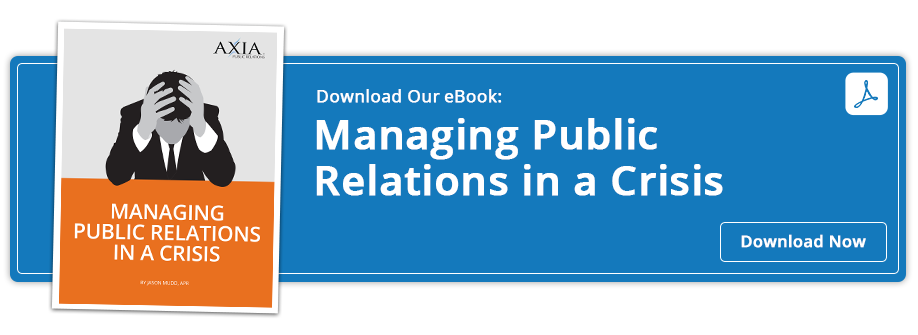 In the past, crisis communication was usually done on an ad hoc basis and in a relatively reactive manner. More recently, companies have realized that communicating messages during times of corporate stress should be carefully managed so that the right message is sent to both their customers and to their employees. Here are four suggestions for attaining this goal:
In the past, crisis communication was usually done on an ad hoc basis and in a relatively reactive manner. More recently, companies have realized that communicating messages during times of corporate stress should be carefully managed so that the right message is sent to both their customers and to their employees. Here are four suggestions for attaining this goal:
1. Be proactive in your actions. It really is rare when a company cannot anticipate a potential problem to their actions. Of course, mistakes are made, but that doesn't mean that the infrastructure for dealing with a crisis cannot be in place. Simply put, a simple tweet can move across social sites at a viral pace, and your communications manager must be ready to deal with it at a moment's notice.
2. Keep the message simple. Do not make excuses. It makes you look weak. Instead, accept responsibility for a crisis – if you are at fault – or boldly defend it. In any event, keep your messages to the media and to your customers as simple and direct as possible. Your customers will appreciate it.
3. React swiftly, but in a controlled manner. While one's baser instincts may be to act in a knee-jerk manner, it behooves any company to consider all its options before responding to a crisis situation. In particular, a base timeline should be established that determines who responds to a crisis and how long they must wait before doing so. It is not a complicated strategy, but a highly effective one.
4. Do not ignore social media. One of the most prominent dangers to a company is a bad reputation on any crowd-sourced social media site. Admittedly, it is difficult to monitor these sites on a 24/7 basis, but your team should at least be trying to do so. Otherwise, you and your company are fighting a “crisis” battle that you have no chance of winning.
For more detailed information on crisis preparation in the digital age, download Axia Public Relations' e-book Managing Public Relations in a Crisis today. Axia's experts can show you how to protect your company’s reputation and restore consumers' trust in your leadership and your brand.
Featured image credit: 123rf.com
Topics: public relations, crisis communications, shared media



Comment on This Article